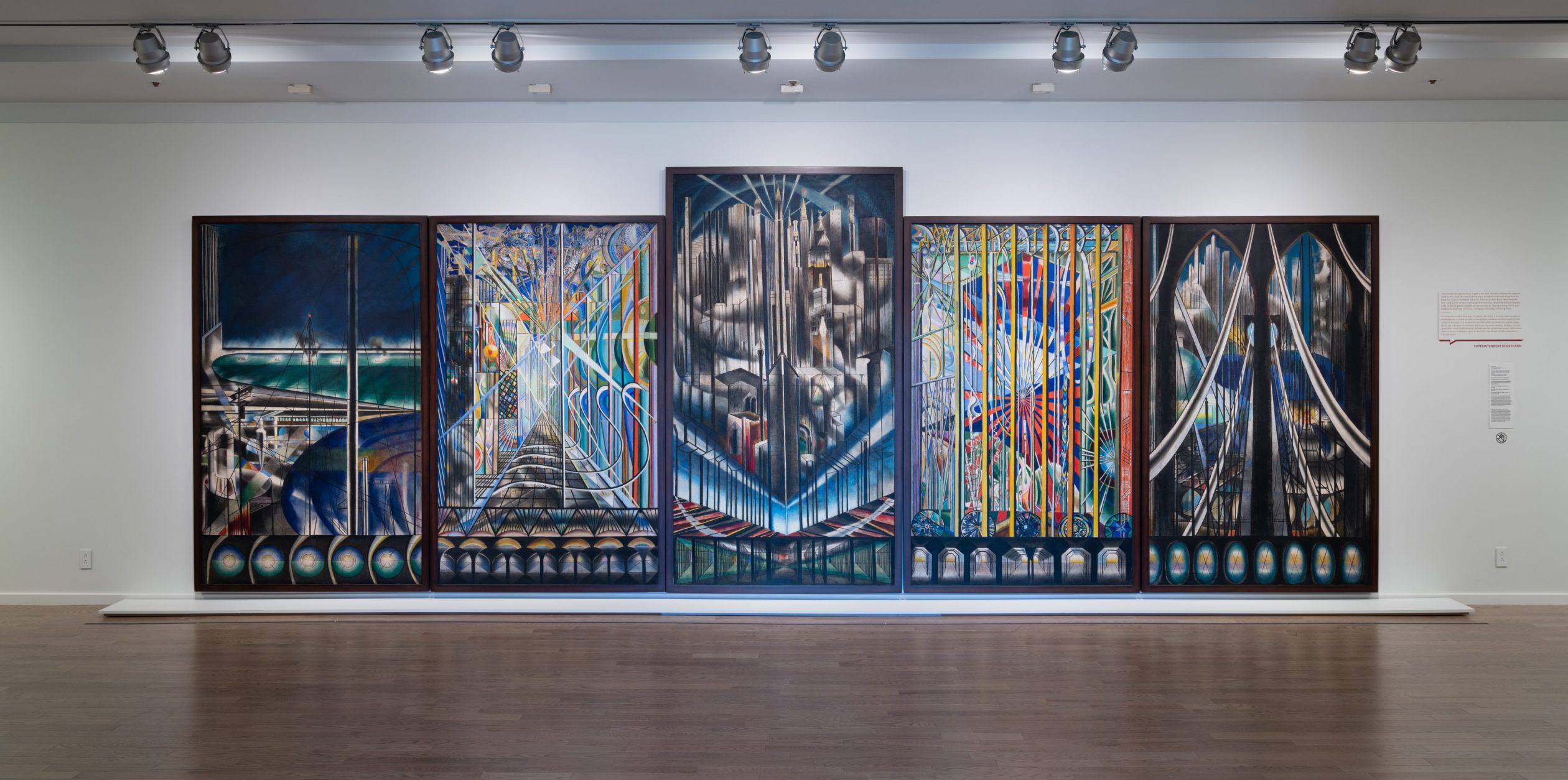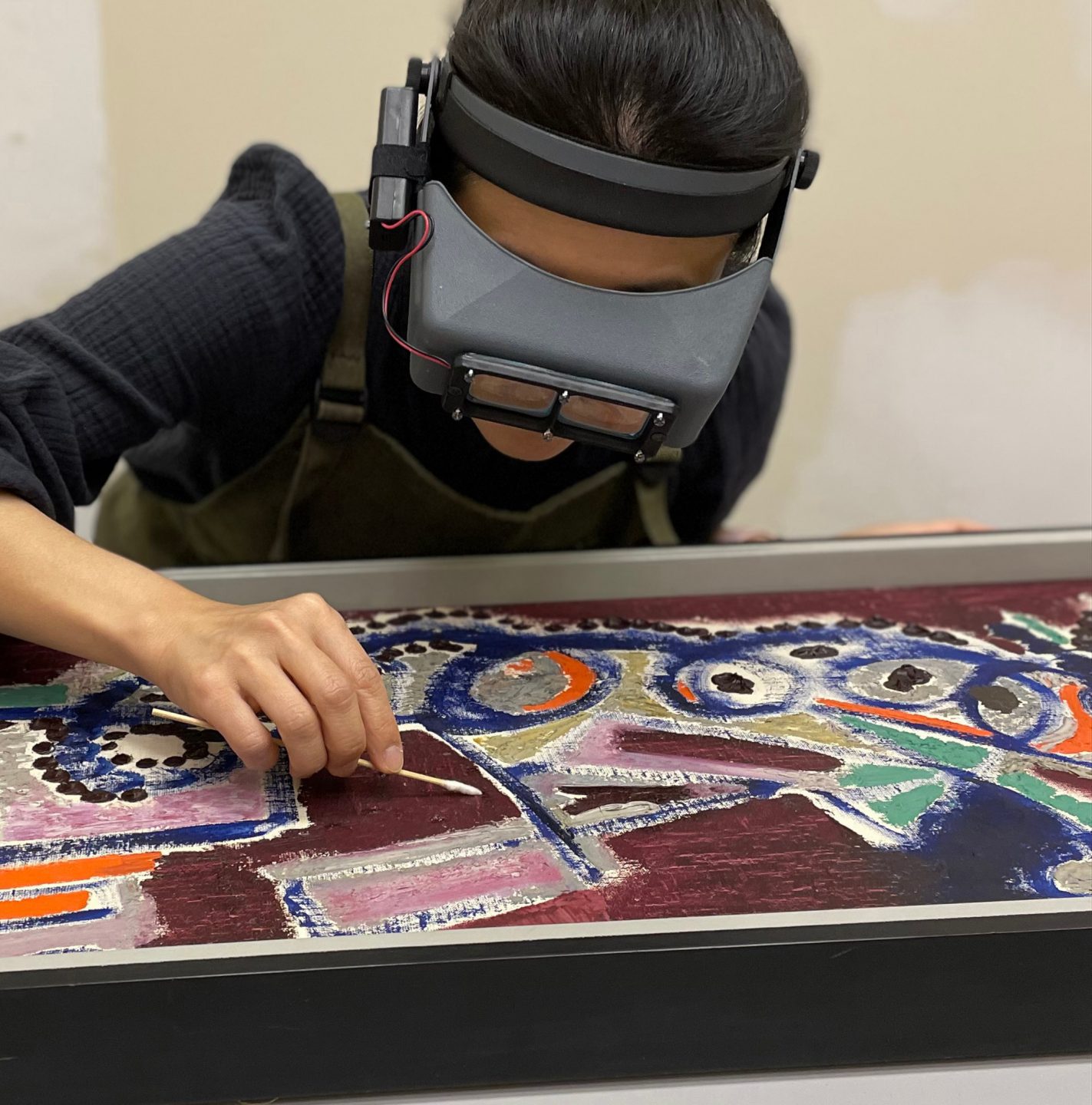
Collections Activity
Collections Management Policy (CMP)

Conservation
Conservation at the NMOA plays an important role in fulfilling the Museum’s mission to preserve the collections for future generations while allowing for the safe sharing of art through loans and exhibits.
The NMOA bases its conservation program on the principles of preventive conservation to ensure that the agents of collection deterioration (physical forces, thieves and vandals, dissociation, fire, water, pests, pollutants and contaminants, light and radiation, incorrect temperature and incorrect relative humidity) are detected, avoided, blocked, or mitigated if possible. Should damage occur, recovery strategies must be undertaken.
Rights & Reproductions
The Newark Museum of Art encourages the publication of our collections and is committed to keeping prices affordable for scholars, educators, and other users of the Museum’s images. All licensing fees charged for high resolution images help to fund ongoing efforts to care for our collections.
If you wish to request a high-resolution image, please read our Photographic Reproductions Price List and Image Use Guidelines and fill out our online application form below.
Rates reflect standard services and are subject to change based on specific cases and/or special requests.
For more information, please contact the Rights and Reproductions department at registrar@newarkmuseumart.org
Please note that Art Resource licenses some of the Museum’s most popular images and can be contacted via their webpage for more information www.artres.com.
Collections Exchange Fund
Active from 2017 to 2021, the Collections Exchange Fund was comprised of funds realized through the generosity of donors to The Newark Museum of Art. The Collections Exchange Fund was sunsetted in 2021. The funds were used to acquire works for the permanent collection and to cover important collections direct care expenses that support our collections plan and mission.
Gifts to the Collection
Thank you for considering making a gift of artwork to the collection of The Newark Museum of Art.
Our policy prohibits us from accepting unsolicited gifts to the collection. Offered gifts will be considered and reviewed following the procedures below.
Send a letter or email with the following information:
- Your contact information: name, address, telephone number, and email address
- Object description: Artist/Maker, Object Date, Medium/Materials, Dimensions, and a brief Description
- Photograph(s) of the object(s)
- A verifiable record of authenticity and provenance (history of ownership)
Please do not send unsolicited gifts to the Museum.
This information can be sent to: nparedes@newarkmuseumart.org
Natalie Paredes, Curatorial Assistant
49 Washington Street
Newark, NJ 07102
973-596-6659
Upon receipt of your written offer, the committee will review and consider your proposed gift. Once the review is complete, you will be notified of the committee’s final decision.
Traveling Exhibitions
For information contact:
Millicent Matthews
Manager, Traveling Exhibitions
The Newark Museum of Art
mmatthews@newarkmuseumart.org
973-596-6660
Deaccessions
The Newark Museum of Art defines deaccessioning as the process by which an accessioned artwork or other object, wholly or in part, is permanently removed from the Museum’s collection. To realize its mission fully, the NMOA considers deaccessioning a part of an overall Collection Refinement strategy that also includes acquisitions and restitution. Deaccessions from the Museum’s collection are guided by well-defined, written Collection Refinement goals and adhere to principles, procedures, and processes approved by the Museum’s Board of Trustees.
The Newark Museum of Art is committed to following all applicable laws regarding the deaccession of works of art, objects, and specimens, and follows best practices as put forth from time to time by the Association of Art Museum Directors (AAMD) and the American Alliance of Museums (AAM).
To learn more about the policy and procedures for the deaccession and dispersal of artworks from the Museum’s permanent collection, see the link above, pages 16-22 of The Newark Museum of Art’s Collections Management Policy.
The proceeds received from the sale of deaccessioned objects may be used to support the Direct Care of collections, meaning the direct costs associated with the storage or preservation of works of art. Such direct costs include for example those for (i) conservation and restoration treatments (including packing and transportation for such conservation or restoration) and (ii) materials required for storage of all classifications of works of art, such as, acid-free paper, folders, matboard, frames, mounts, and digital media migration. Funds received from the disposal of a deaccessioned work of art shall not be used for operations or capital expenses except as provided above. Direct care does not include (a) salaries of staff or (b) costs incurred for the sole purpose of temporary exhibition display. Direct care is an investment in existing collections that enhances the life, usefulness, or quality of the collection and thereby ensuring that they will continue to benefit the public.